Cheat Sheet: Equality | Political Science Class 11 - Humanities/Arts PDF Download
| Table of contents |

|
| Why does Equality Matter? |

|
| What is Equality? |

|
| Three Dimensions of Equality |

|
| How can we Promote Equality? |

|
Why does Equality Matter?
Equality is a moral and political ideal that says all human beings have equal worth and deserve equal respect because of their common humanity.
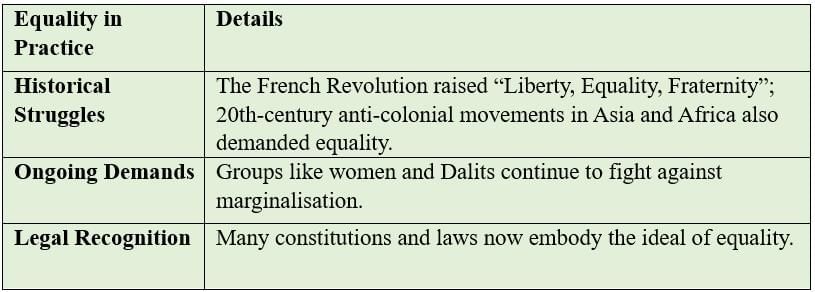
Paradox of Equality

What is Equality?
Equality means that all human beings deserve the same respect and consideration because of their common humanity. It does not mean treating everyone identically, but ensuring fairness and equal respect.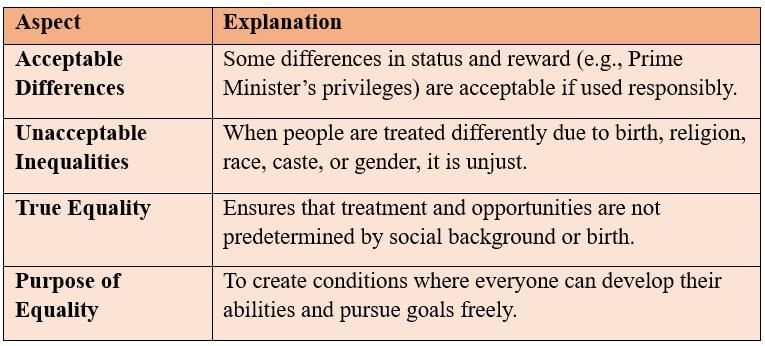
Equality of Opportunities

Natural and Social Inequalities
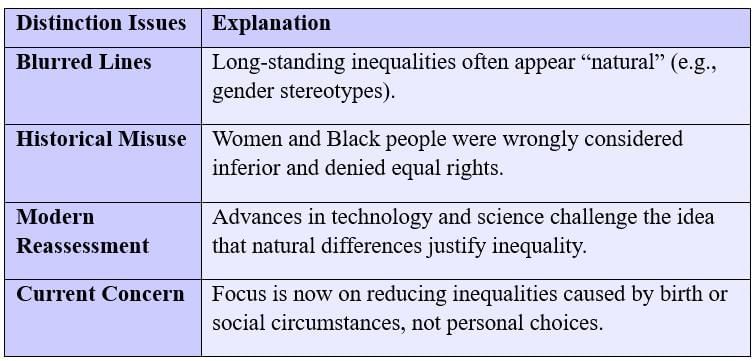
Differences
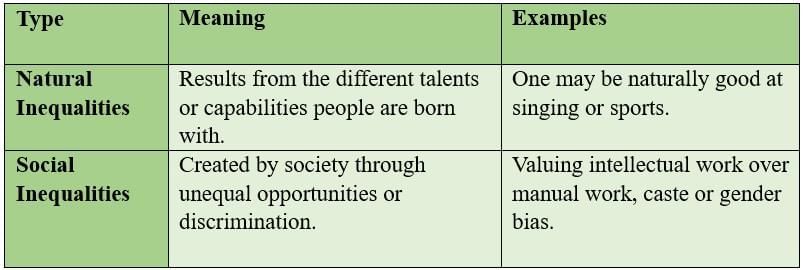
Three Dimensions of Equality
Equality can be achieved only when all its dimensions — political, social, and economic — are addressed together. These three aspects together help build a just and equal society.
Political Equality
Ensures that all citizens enjoy equal rights and status in the political sphere.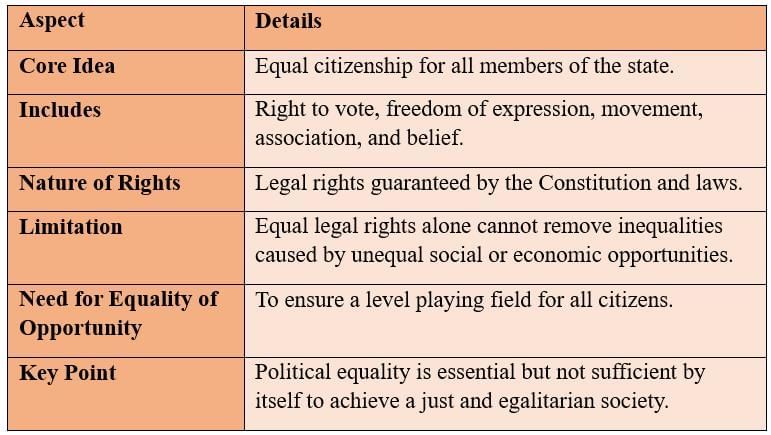
Social Equality
Ensures equal opportunities and conditions for all members of society, regardless of background.
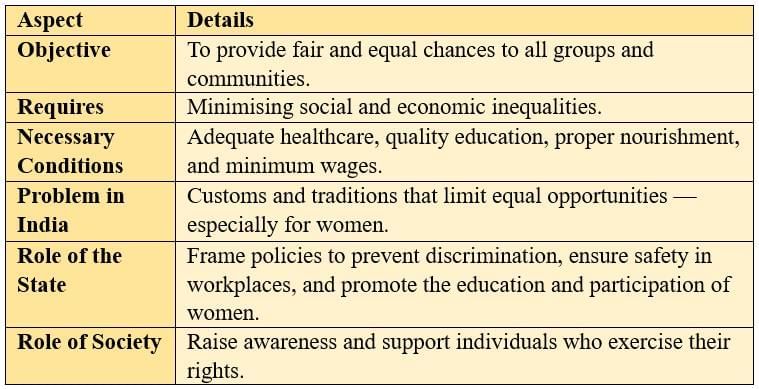
Economic Equality
Ensures fair distribution of wealth, income, and resources to prevent extreme economic divisions.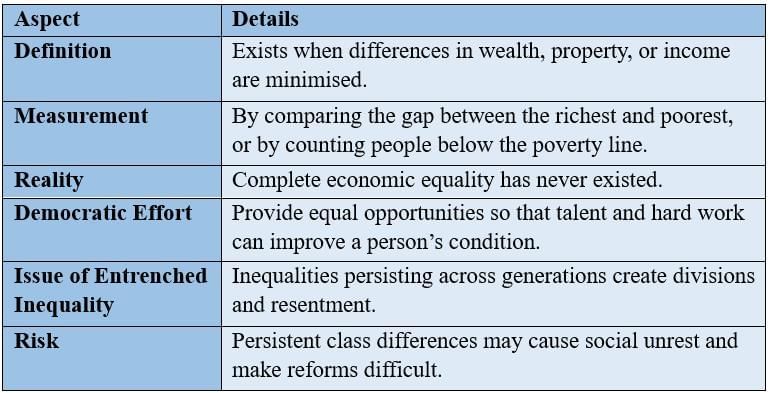
FEMINISM
Equal rights for women and men.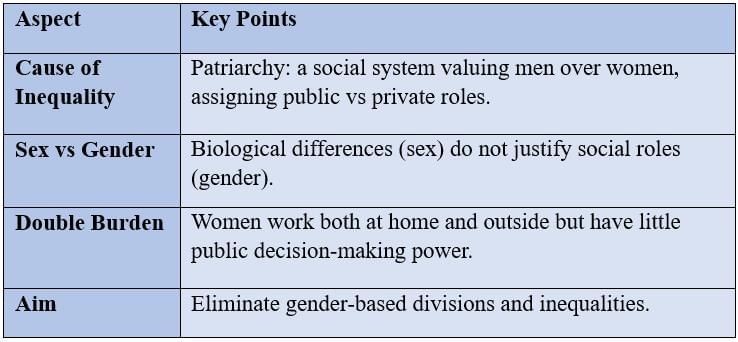
SOCIALISM
Reducing inequality and distributing resources justly.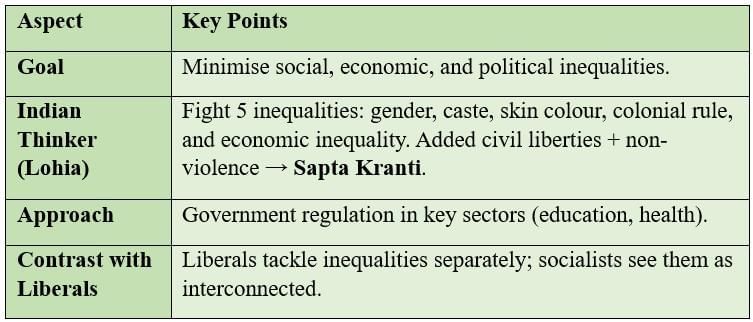
How can we Promote Equality?
Promoting equality requires ending formal inequalities and taking measures to ensure all individuals can enjoy the same opportunities, even if some differential treatment is needed to achieve this goal.
Establishing Formal Equality
Ending legal and social restrictions that create inequality and granting equal rights to all.
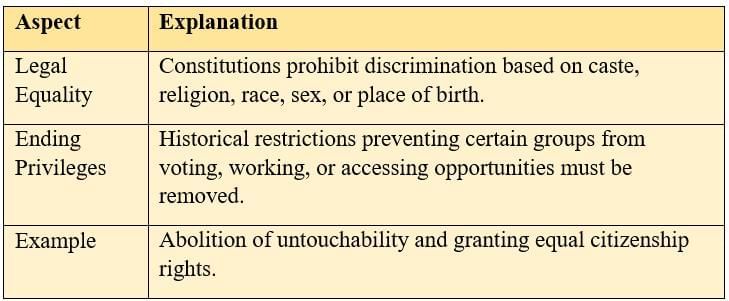
Equality Through Differential Treatment
Sometimes, treating people differently is necessary to ensure they can enjoy equal rights.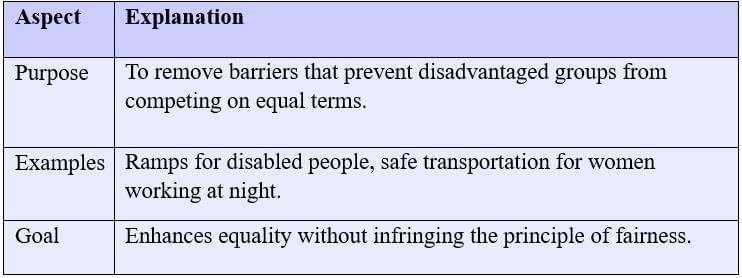
Affirmative Action
Positive measures to correct entrenched inequalities and provide fair opportunities to disadvantaged groups.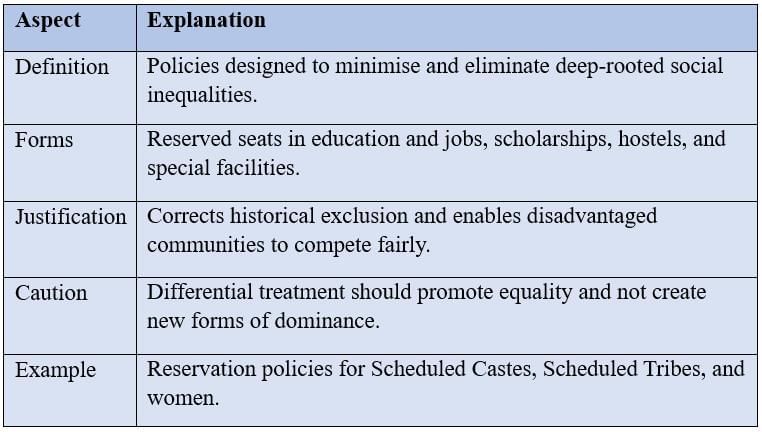
|
43 videos|278 docs|39 tests
|
FAQs on Cheat Sheet: Equality - Political Science Class 11 - Humanities/Arts
| 1. Why is equality important in society? |  |
| 2. What is the paradox of equality? |  |
| 3. What are the different dimensions of equality? |  |
| 4. How do natural inequalities differ from social inequalities? |  |
| 5. What are some effective ways to promote equality? |  |




















